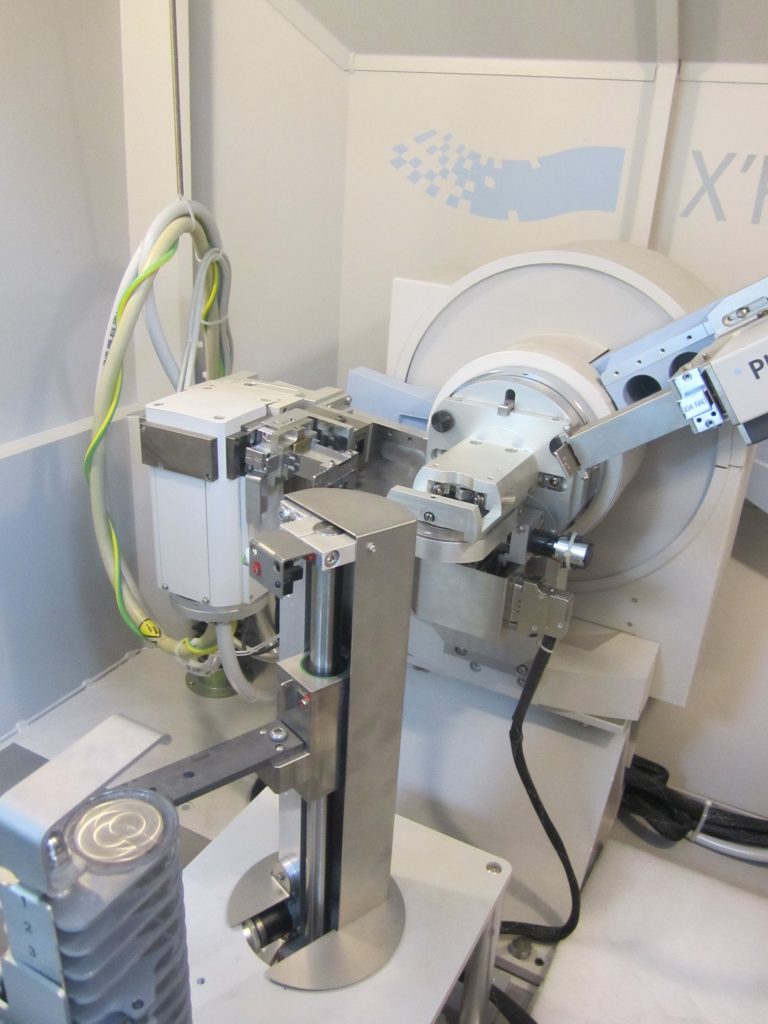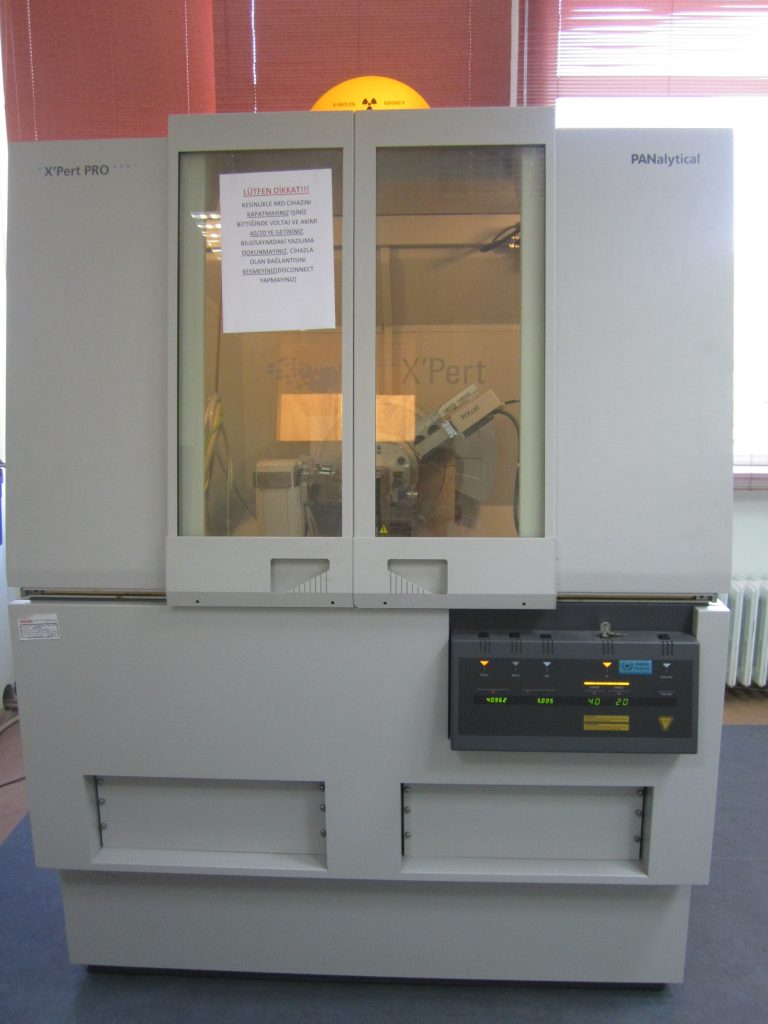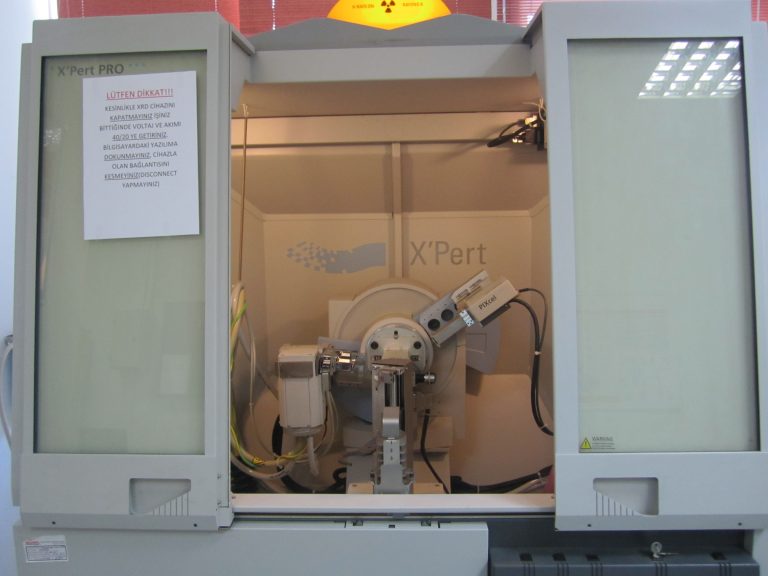
XRD (X-Ray Diffractometer)
X-ray diffraction is a non-destructive analysis method that allows for the determination of the crystallographic properties of materials and the phases they contain. By applying X-ray diffraction to powder samples, characteristics such as crystal structure, grain size, and preferred orientation can be determined. Additionally, comparing the data obtained from the analysis of samples with unknown phases to the relevant database allows for the identification of the phases contained in the sample. Using methods such as Rietveld analysis, the relative quantitative ratios of compounds present in the sample can be determined.
Equipment Specifications
-
PW3040 device compartment with microprocessor system, measurement and control electronic equipment, and high-voltage generator
-
PW3050/6x goniometer
-
X-ray tube mounted on the goniometer
-
Optical units for incoming and diffracted rays
-
Sample compartment
-
Detector measuring the intensity of diffracted X-rays
-
Cu-Kα X-ray tube, Maximum voltage: 60 kV, Maximum current: 55 mA
 Applied Analyses
Applied Analyses
-
Phase analysis of samples with flat or irregular surfaces, thin films, or samples contained in glass tubes
-
Opportunity to perform quantitative analysis of samples in groups
-
Crystallography and Rietveld analyses of samples with flat or irregular surfaces and powder samples in glass tubes
-
Residual stress analysis of flat samples and irregularly shaped materials
-
Reflectometry analysis in thin layers and coated materials
-
High-resolution topography analysis on single crystal materials
-
Texture analysis of materials with preferred orientation
-
Opportunity to perform analysis in small areas on heterogeneous samples
-
In-plane diffraction in thin film
-
Measurement of transitions in samples between foils
-
Analysis of changes in crystal structure caused by varying environmental conditions
-
High-speed X-ray diffraction for automatic analysis of numerous samples
